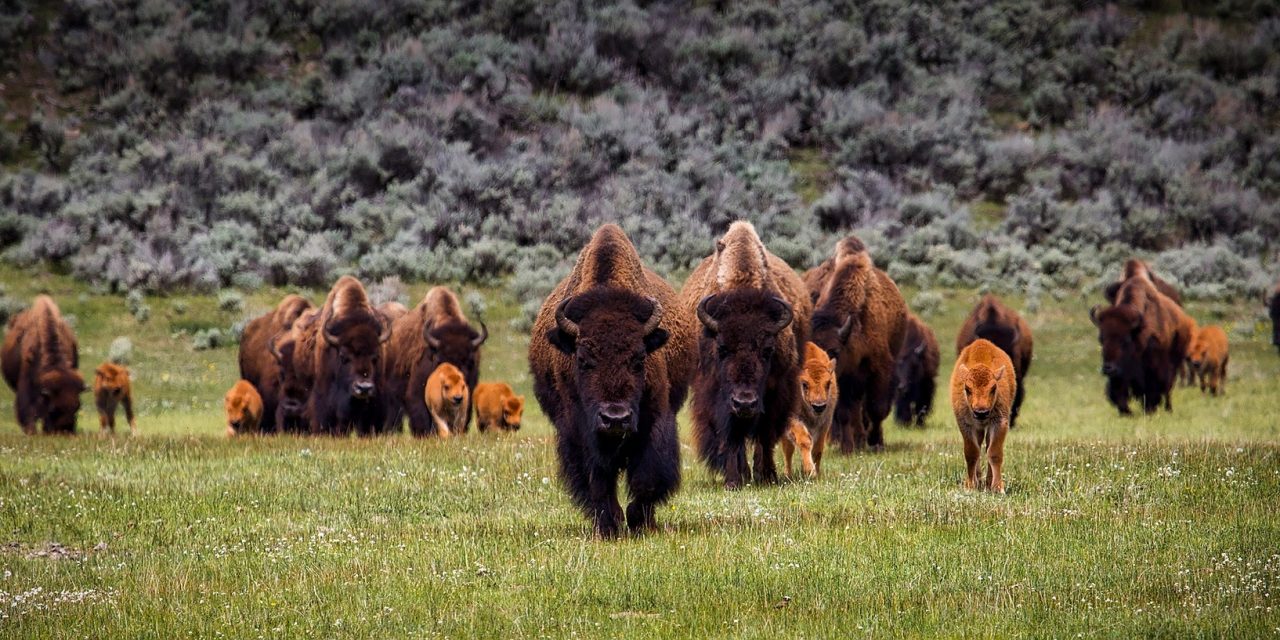Read Part 2: Legends of America: Hugh Glass – The Man Who Would Not Die
Century Watch
This Year in History: A.D. 1823
In 1823, a group of young men set out from Missouri into the wilderness. “Ashley’s 100” would soon become known as “The Mountain Men of the West.” Their stories read more like epic folk legends than records of an innovative entrepreneurial venture. Raised on the lore of Lewis and Clark (whose adventures began in 1804), they mapped, cut trails, and opened the western wilderness to settlement.
American Innovation
The Rocky Mountain Fur Company was established in 1822 by General William Henry Ashley and Major Andrew Henry, who served together during the War of 1812. At the time, fur trading companies often obtained furs from Native Americans and lone trappers–often in exchange for alcohol. On May 6, 1822, the sale of alcoholic beverages to Native Americans was banned.
William Ashley, hitherto unlucky entrepreneur and aspiring politician, had an idea. He would hire 100 young men to venture into the unorganized and unknown parts of the western wilderness to explore as far as they desired. As payment, the young men could keep half of all furs they obtained and Ashley and Henry would provide all supplies. Once a year, the owners, trappers, and any Native Americans who wished to trade, all met together in what became the highly successful “rendezvous system.”
Mountain Men of the West
It started with an ad. Ashley and Henry posted this in several Missouri newspapers:
To Enterprising Young Men.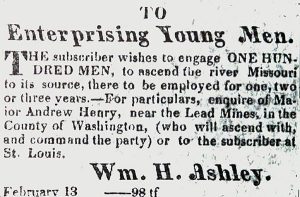
The subscriber wishes to engage one hundred men to ascend the river Missouri to its source, there to be employed for one, two, or three years. For particulars, enquire of Major Andrew Henry, near the Lead Mines, in the county of Washington, (who will ascend with, and command the party) or to the subscriber at St. Louis.
One hundred men responded. Among these were Jedediah Smith (23), Thomas Fitzpatrick (23), William Sublette (25), Jim Bridger (17), Hugh Glass (32), James Clyman (31), and Davy Jackson (34).
Their stories became American legend and characterized the nature of the mountain men. Some of the first adventures involved Jedediah Smith.
Determination, Independence, and Grit
I wanted to be the first to view a country on which the eyes of a white man had never gazed and to follow the course of rivers that run through a new land. ~ Jedediah Smith
Spring of 1823: Battle with the Arikara
That first spring in the far north of South Dakota, while camping in the foothills along the Grand River, 23-year-old Jedediah Smith became Captain Smith. A recent incident between the Missouri Fur Company and the Arikara tribe had sparked hostility, and many Ashley men were caught in a surprise night attack by the Arikara. Smith’s conduct in this fight established his reputation as a brave and competent leader. It was said of Smith:
When his party was in danger, Mr. Smith was always among the foremost to meet it, and the last to fly; those who saw him on shore, at the Arikara fight, in 1823, can attest to the truth of this assertion.
Jedediah was made commander of a squad of Ashley men assembled to fight the perpetrators, and from then on was known as Captain Smith. Hugh Glass wrote to the parents of one young man:
Dr Sir:
My painful duty it is to tell you of the death of your son who befell at the hands of the Indians 2nd June in the early morning. He died a little while after he was shot and asked me to inform you of his sad fate. We brought him to the ship when he soon died.
Mr. Smith a young man of our company made a powerful prayer who moved us all greatly and I am persuaded John died in peace. His body we buried with others near this camp and marked the grave with a log.
His things we will send to you. …
Yr Obt Svt Hugh Glass
Fall of 1823: Grizzly Attack
Not many months later, camping in the brown landscape of rocks and short grass near the Cheyenne River in southwestern South Dakota, Smith was charged by a mother grizzly bear. The attack was so sudden that his men could only watch as the bear tore through Smith’s side, broke several of his ribs, and removed half his scalp and one ear with her jaws. Smith fought the bear off and, bleeding profusely but still conscious, directed an uncertain Jim Clyman on how to sew his scalp and ear back on. Clyman wrote of this event:
I put my needle sticking it through and through and over and over laying the lacerated parts together as nice as I could with my hands.
From then on Smith wore his hair long to cover the jagged scar. After a few weeks, he continued leading his 16 men on their first expedition west into the Rockies.
Spring 1831: Ambush
Jedediah was 32 years old on his final expedition. On May 27, he and another member of his group went ahead in search of water near the Cimarron River in the grassy plains of southwest Kansas. Here they were surrounded and killed by a group of Comanches.
He wrote this before he died:
I started into the mountains, with the determination of becoming a first-rate hunter, of making myself thoroughly acquainted with the character and habits of the Indians, of tracing out the sources of the Columbia River and following it to its mouth; and of making the whole profitable to me, and I have perfectly succeeded. ✤
A Brief Biography of Jedediah Smith
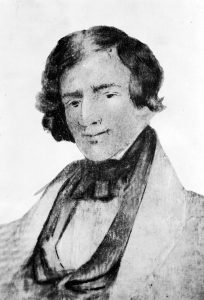 Born into a Christian family of eleven children, Smith received a basic education in reading, writing, arithmetic, and some Latin. Unique among the “mountain men,” he did not smoke or drink, and purportedly carried a Bible with him wherever he went, which he read every day. His motivation for responding to Ashley’s ad was to provide for his family who were of modest means, and to explore and map uncharted lands. Ashley’s venture allowed him to do both. He eventually bought houses and land for some of his siblings, and became co-owner of the Rocky Mountain Fur Company.
Born into a Christian family of eleven children, Smith received a basic education in reading, writing, arithmetic, and some Latin. Unique among the “mountain men,” he did not smoke or drink, and purportedly carried a Bible with him wherever he went, which he read every day. His motivation for responding to Ashley’s ad was to provide for his family who were of modest means, and to explore and map uncharted lands. Ashley’s venture allowed him to do both. He eventually bought houses and land for some of his siblings, and became co-owner of the Rocky Mountain Fur Company.
Jedediah Smith, in his nine-year career as a Mountain Man, mapped the majority of the West and traveled twice the distance and territory as Lewis and Clark, taking copious notes as he went. He had planned to publish his journals and create a master map of the West. Some of his maps were used by John C. Fremont and his scout, Kit Carson (who rode under an older Jim Bridger), when they explored and retraced Jedediah’s path across the Sierra Nevadas into California. The magnitude of Jedediah’s contribution to the exploration of the West, largely forgotten for decades, was realized in the 1880s when his papers were examined by historians.
To that end let us take a view of what another Poet Sings …
“Lord, I believe a rest remains
To all Thy People known;
A rest, where pure enjoyment reigns,
And Thou art loved alone.”
— Letter of Jedediah Smith to his brother, Ralph
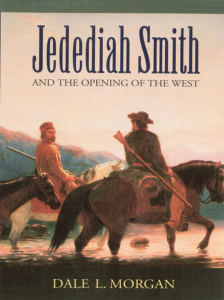
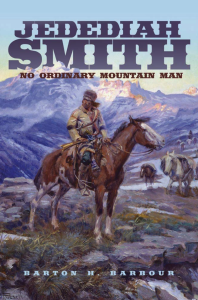

Coming Up: Hugh Glass, Jim Bridger, and More Famous Men of Ashley’s 100
————————————————–
Watch and Read
Jedediah Smith
Jedediah Strong Smith | Path Through History | WSKG History (Youtube)
Jedediah Smith Society: INTERACTIVE MAPS
Jedediah Smith (Bighorn Canyon National Park Service)
A Mighty Man was Jedediah Smith
The Man Who Dared to Cross the Ranges
Jedediah Smith – Blazing the Rockies
Black Hills explorer Jedediah Smith
Jedediah Smith Part Two a Legacy of Exploration
Read the Journals of Jedediah Smith’s first two expeditions through the Rockies to California
Mountain Men, The Fur Trade, Trading Posts, and Trappers
Trappers, Traders, and Pathfinders
Trading Posts of the Mountain Men
The Fur Trade Role in Western Expansion
A Tale: The First Written Description of Yellowstone Geysers — Daniel T. Potts, 1827
CHAPTER ELEVEN: THE MOUNTAIN MEN
Ashley and Ashley’s 100
The Ashley-Smith explorations and the discovery of a central route to the Pacific, 1822-1829
William Ashley Rocky Mountain Fur Company Frontiersman
Ashley’s 100, Mountain Men and Westward Expansion (Youtube)
Real Stories behind The Revenant, part II: Ashley’s Hundred
William Ashley and the Rocky Mountain Fur Company
Notes on General Ashley, the Overland Trail, and South Pass

